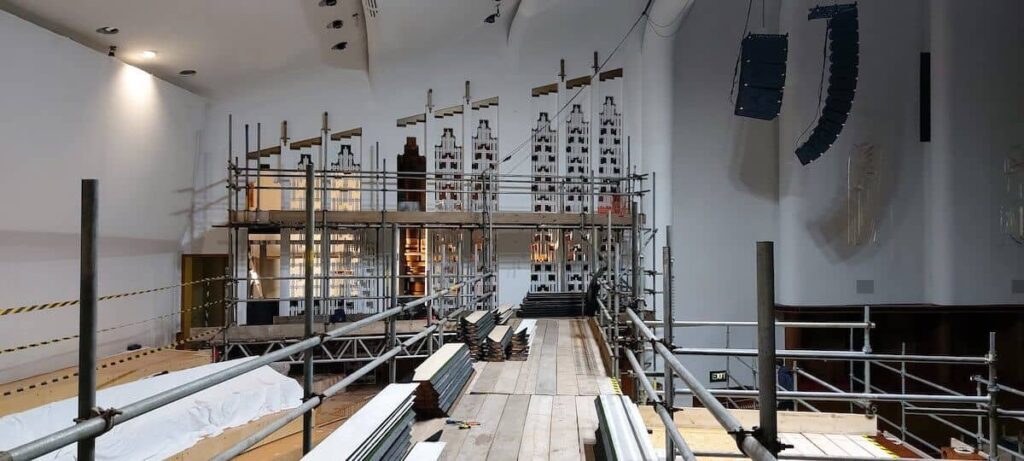
Lockdown has been a time to deliver a number of projects that are made far easier when the venue is closed. One such job is the work we completed at the stunning Liverpool Philharmonic. Work has been underway for some time to restore the original Rushworth and Dreaper Organ, originally installed in 1939.
According to the Philharmonic, the organ contains more than 120,000 yards of insulated copper wire to connect the console with various sections of the organ. There are also more than 17,000 switches and contacts in the organ, along with 2,847 electric magnets. Today, the organ remains the oldest remaining working example of its type anywhere in the world.

What we are NOT claiming here is that Kimpton have become experts in organ restoration overnight, but we are experts in creating safe environmental conditions for the organ to continue to operate when it is put back into service. Our role was to install new comfort cooling in the organ chamber rooms to maintain between 21 and 23 degrees centrigrade. In addition, the humidity needs to be at a consistent 40% – 60% RH. This is a similar challenge to those we face when we work in art galleries and museums as we covered in this article here.
At the Philharmonic, the organ chamber rooms are positioned on either side of the main stage with three individual areas requiring cooling. The cooling of each of these rooms has been achieved by wall mounted multi systems.
The building itself is Grade II listed but is actually a relatively new replacement for the 1840 original, destroyed overnight in a fire on 5 July 1933. The redesigned Philharmonic was created as a more multi-use space, on the insistence of the Liverpool City Corporation and is flexible enough to be used for both cinema and theatre shows, in addition to its first use as a music venue.
This upgrade and refurbishment is another in a series of works designed to improve the safety and usability of the various spaces to ensure the Philharmonic stays at the centre of the music and entertainment scene for Liverpool.
According to Wikipedia, other works have included an extension being added to the rear of the hall which was completed in 1992, designed by Brock Carmichael Associates. There was then a major refurbishment of the hall in 1995 at a cost of £10.3 million. This latter work included the complete replacement of the fibrous plaster interior with concrete, carried out again by Brock Carmichael.
It’s this attention to detail and real care for the building and its incredible history that ensures the Philharmonic not only looks and sounds even better than it did on opening in 1939, but will continue to do so for many years to come.
If you would like to discuss any of our services, please call 0151 343 1963 or complete the form below and we will be in touch shortly.